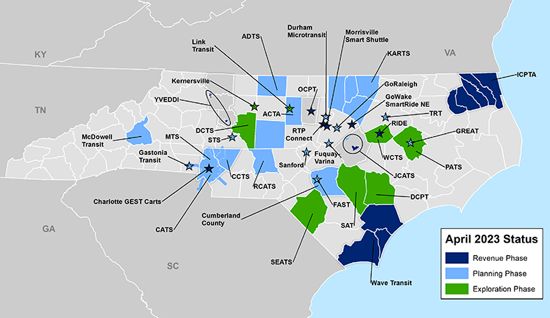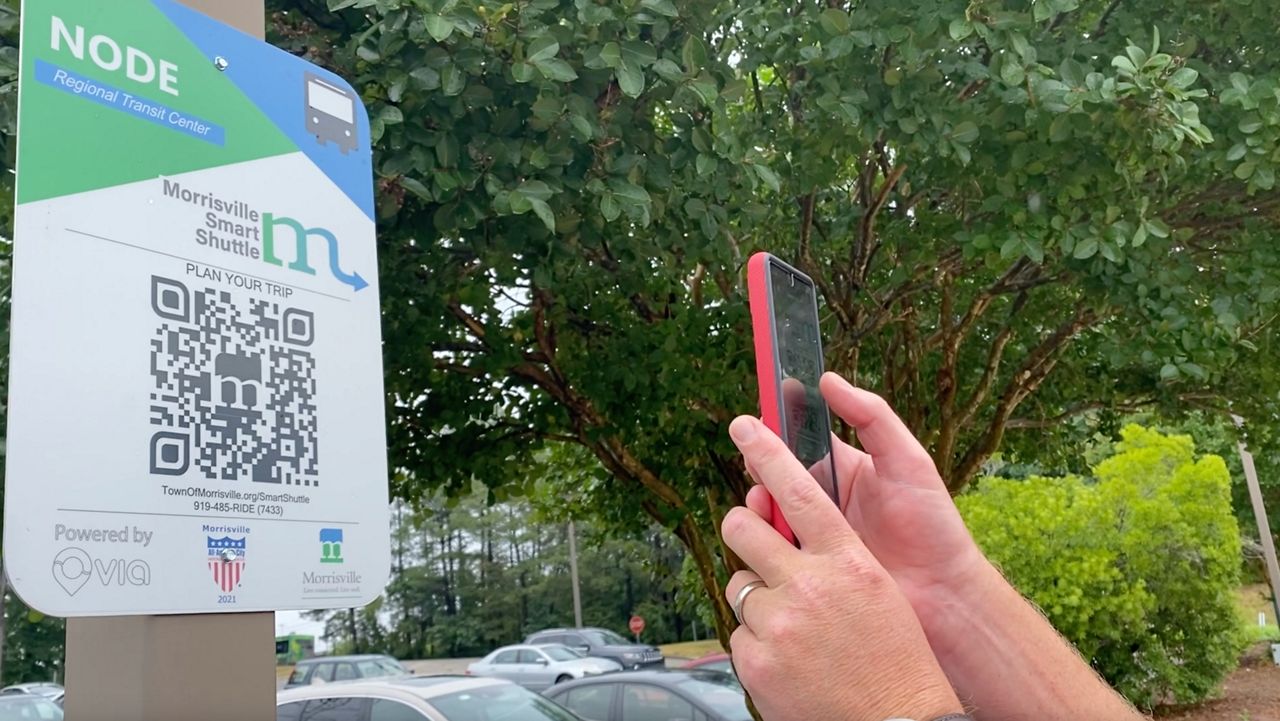WAKE COUNTY, N.C. — North Carolina is considered a leader in microtransit, a type of on-demand public transportation. The state’s first microtransit program launched in 2019, and now there are seven microtransit services running across the state with 11 more in planning phases.
- North Carolina is considered a leader in microtransit, a type of on-demand public transportation
- There are seven microtransit services running across the state with 11 more in planning phases
- Microtransit is designed to fill the gaps in places that don’t have traditional fixed route city buses
Morrisville’s Smart Shuttle is one example of on-demand microtransit in the state that’s free to use. It is funded by a combination of local, state and federal money.
Dr. Kai Monast is the associate director of the Institute for Transportation Research and Education (ITRE) at N.C. State University. Monast has been helping NCDOT navigate different services like microtransit.
“There is no set route and there's no set times when the vehicle comes, so you get out your phone and you can book a ride and the vehicle will show up and pick you up and take you to your destination,” Monast said. “We’re partners on a research project that looked at all the microtransit implementations across North Carolina and to provide best practices and lessons learned for future implementations.”

Monast says North Carolina currently has seven public microtransit services in Orange County, Wilson, Morrisville, Wilmington, Elkin/Mocksville, Wake County and Smithfield/Selma.
He says microtransit in Elizabeth City and Charlotte are currently in the near-term planning phase. Those services should launch in six months or less.
Additionally, there are 11 microtransit services in the long-term planning phase: Sanford, Rocky Mount, Salisbury, Rockingham County, Randolph County/Asheboro, McDowell County, Greenville, Gastonia and Henderson counties. Those services are more than six months away from launching.
Monast says microtransit is proving to be incredibly popular in some areas.
“Especially in a community like Mooresville, I think you'll see a lot of people are taking the smart shuttle to access grocery stores, or maybe they could have gotten a ride with somebody else, but it gives them another choice to enable them to move the way they want to move around,” Monast said. “An ideal situation, here in Morrisville, is service perhaps to the airport in that people are constantly going in and out of the airport from different locations. A place where it wouldn't work well is going to work. When everyone shows up at 9 o’clock and everyone wants to leave at 5 o’clock.”
“The city of Wilson is constantly adding vehicles and hours and services to meet the demand. And I think you'll see as the new sites like Johnson County just had a new site open up. You'll see that the demand far exceeds the capacity,” Monast said.
Monast says these services are just part of the entire public transportation puzzle.
“It used to be we would have demand response only in the rural areas and fixed out in the urban areas. And now microtransit can fill in the spots in between,” Monast said.

Monast says there are a few challenges they’re working to address with microtransit like making sure the services are accessible for people who do not have smart phones or credit cards, two things that are often required depending on the technology.
According to NCDOT, the U.S. Department of Transportation through the Rural Surfaces Transportation Grant Program awarded NCDOT $10.4 million for Mobility for Everyone, Everywhere in NC or MEE NC.
“The grant advances NCDOT's vision and strategy to partner with the state’s rural transit systems to launch on-demand microtransit in 11 communities throughout the state. This program will accelerate the deployment of high-quality, on-demand transit services leading to more equitable mobility and improved access to opportunities, services and resources from 2024 to 2026,” according to the NCDOT website.




